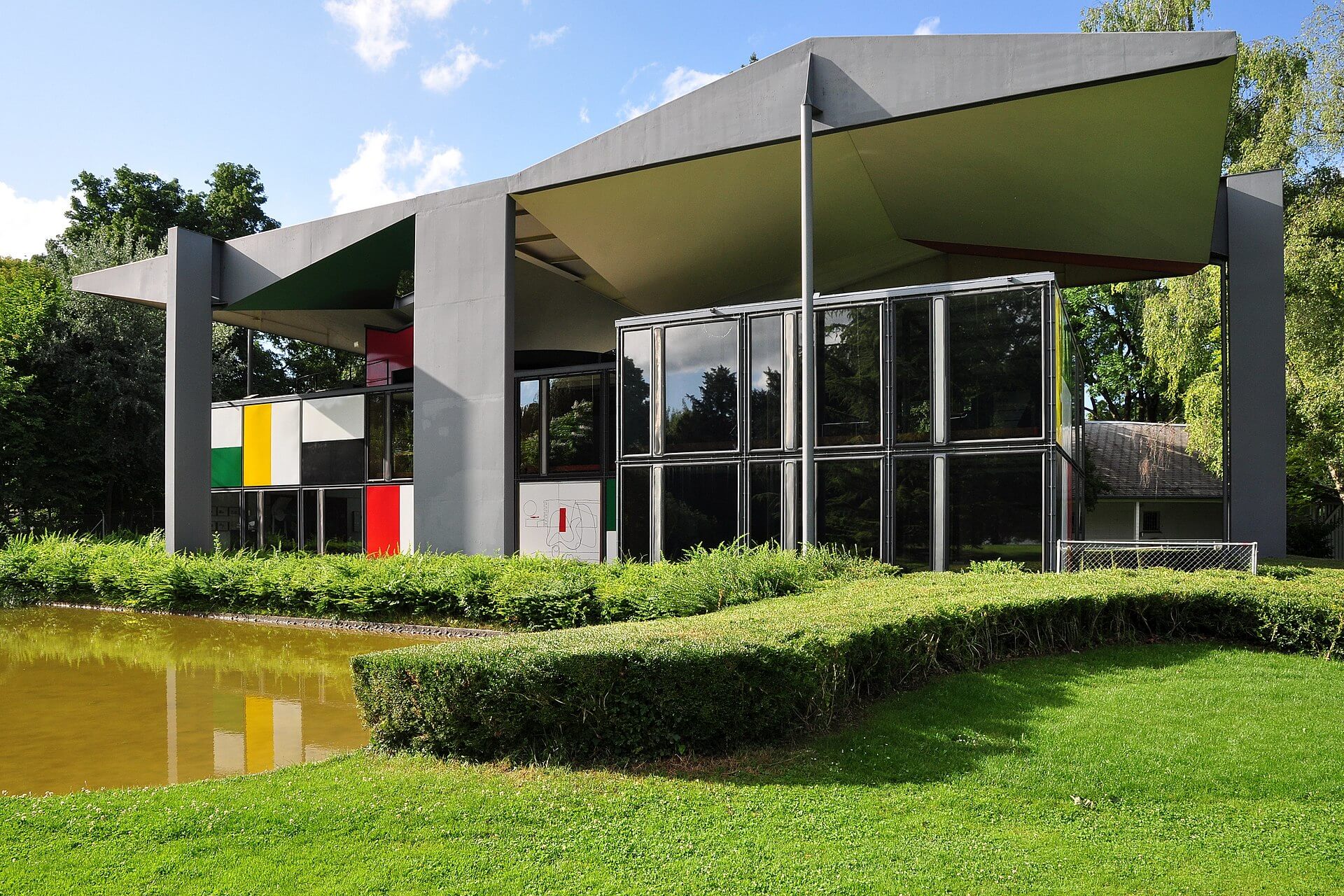French architect, professor, and scholar José Oubrerie died on March 10, age 91. Oubrerie was famously known as one of Le Corbusier’s closest protégés. Together, they designed notable buildings like Église Saint-Pierre in Firminy, France. At his time of death, José Oubrerie was the last living apprentice of Le Corbusier, after B. V. Doshi died last year.
Oubrerie’s passing was confirmed by a spokesperson from Ohio State University’s Knowlton School, where Oubrerie was professor emeritus. Heartfelt remembrances about Oubrerie were shared on social media after his death by Dora Epstein Jones, Martin Summers, and other architects.
Todd Gannon, an architecture professor at Ohio State University and AN contributor, described Oubrerie as a “towering figure in our field, whose catalog of built work, though not extensive, is comprised almost exclusively of masterpieces,” Gannon told AN. “The French Cultural Center in Damascus, the Miller House in Lexington, the Firminy church, these astonishing buildings bear the stamp of Corbusier’s influence, but more importantly demonstrate Jose’s original eye and deft hand, his irrepressible mischievousness, and his refusal to play the part of dutiful protege. He also was a legendary teacher, whose instruction, though peppered with pithy, heavily accented exclamations (‘it’s pretty good,’ or, more rarely, ‘fantastique!’), proceeded less by saying than by doing.”
Gannon continued: “[Oubrerie] tore at his students’ models and scribbled over their drawings, excising the extraneous with the force of a tornado. Then, just before he delivered the now-obvious coup de grace, he’d stop, turn to you with a sly smile, and intone, You see? It could be good!” Gannon continued. “Above all, Jose loved architecture. His infectious enthusiasm for the great design was as boundless as his disdain for gutless conventionality, which is perhaps best encapsulated in his distinctive pronunciation of the word “sheetrock.” He was gregarious and hilarious, fearlessly opinionated, and smart as a whip. Though we’ve lost his one-of-a-kind voice, the memory of his unbridled passions — for great food and wine, great conversation, and the distinctive pleasures of architecture, literature, music, and art – remains with us, and will persist as a model for us all.”
Oubrerie was born on November 9, 1932 in France. Between 1946 and 1951, he studied painting at the École des Beaux-Arts in Nantes, and then architecture at École Nationale Supérieure des Beaux-Arts in Paris.
After completing his studies, Oubrerie joined Atelier Le Corbusier at 35 Rue de Sèvres in Paris in 1963, just 18 months before Le Corbusier’s death in 1965. With Le Corbusier, Oubrerie helped design Église Saint-Pierre in Firminy, an experimental French commune just south of Lyon. Then in 1964, Oubrerie began designing a new hospital in Venice, a project that never came to fruition after it was cancelled in 1972.
Le Corbusier died in 1965, and Oubrerie took over Église Saint-Pierre, which was’t completed until 2003. When Église Saint-Pierre was finished, Peter Eisenman said it was the most important structure built since 1980.
After Corb’s death, Oubrerie designed Centre Le Corbusier in Zurich, a museum dedicated to the late architect which was completed in 1967. That year, the late architect launched his own office in Paris, Atelier José Oubrerie.

Three years later, in 1970, Oubrerie was registered in the Ordre des Architectes in Paris, France and became an AIA honorary member. In 1988, he completed the French Cultural Center in Damascus, Syria. In 1992, Oubrerie completed the Miller House in Lexington, Kentucky where he was dean of the School of Architecture at the University of Kentucky College of Design. By 2005, Oubrerie was one of four remaining apprentices of Le Corbusier: the other three were Latvian architect Jerzy Soltan (1913–2005), Chilean architect Guillermo Julian de la Fuente (1931–2008) and Indian architect Balakrishna Doshi (1927–2023).
Throughout his career, Oubrerie held a bevy of teaching appointments. He taught at Ohio State University, University of Illinois at Chicago, University of Kentucky, New York Institute of Technology, Columbia GSAPP, Cooper Union, the Polytechnic University of Milan, and the Ecole Nationale Superieure des Beux-Arts in Paris.
One of Oubrerie’s last commissions came in 2015, when he was invited by Steven Holl to design The Chapel of the Mosquitoes near Holl’s home in Rhinebeck, New York. Oubrerie described his unbuilt The Chapel of the Mosquitoes as a synthesis of ideas from two of his most significant built works: the 1986 French Cultural Center in Damascus and the 1992 Miller House in Kentucky.
Oubrerie’s remarkable tenure took center stage in a 2015 book published by Oscar Riera Ojeda Publishers, Architecture With And Without Le Corbusier: Jose Oubrerie Architect.

